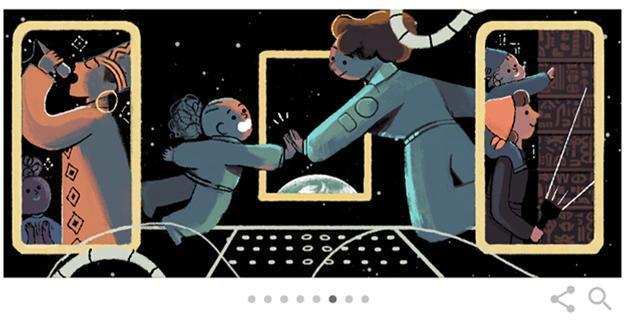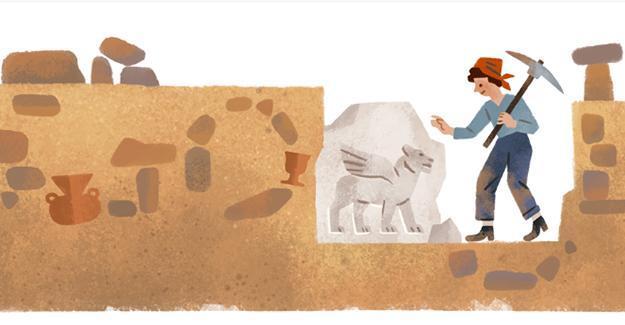Doyenne of Turkish archaeology Halet Çambel featured in Google’s Women’s Day Doodle
ISTANBUL

The doyenne of archaeology in Turkey, Halet Çambel, is among the prominent female figures depicted in a doodle prepared by Google for International Women’s Day on March 8.
The slideshow doodle showcased 13 female pioneers from around the world including American journalist Ida Wells, Egypt’s first female pilot Lotfia El Nadi, and Mexian painter Frida Kahlo.
Çambel, who was also the first Muslim woman ever to compete in the Olympics, featured in the sixth chapter of doodle on the right hand side, holding a torch toward an archaeological piece.
The other female figures in the doodle were Italian-born Brazilian architect Lina Bo Bardi, Soviet scientist and researcher Olga Skorokhodova, South African singer Miriam Makeba, U.S. astronaut Sally Ride, English mathematician Ada Lovelace, Indian dancer Rukmini Devi, Argentine physician Cecilia Grierson, Korean lawyer Lee Tai-young, and French tennis champion Suzanne Lenglen.
This is not the first time that Google has paid tribute to Çambel, who died in 2014 at the age of 98. She was previously honored with a doodle for her birthday on Aug. 27, 2015.

Çambel worked for many years as a professor at Istanbul University. She spent many years of her life at the Karatepe-Aslantaş ancient site in the southern Turkish province of Osmaniye, first living in a tumulus and then in a modest two-room house. She played a key role in the understanding of ancient Hittite hieroglyphics by discovering a tablet with the Phoenician alphabet, which allowed philologists to decipher the inscription.
Çambel received undergraduate training in archaeology at the Sorbonne University in Paris and received a doctorate in 1940 from Istanbul University. She competed in the women’s individual foil event at the 1936 Summer Olympics, becoming the first Muslim woman ever to compete in the Olympics. She was also a member of the German Archaeology Institute.
In Hittite history studies, initiated with the order of Mustafa Kemal Atatürk, Çambel worked in excavations at the Hittite city of Çorum-Hattusa and was a part of the team that discovered thousands of tablets in Hattusa.
After the site was discovered in 1946, it was excavated between 1947 and 1957 by a team led by Çambel and German professor Helmuth Bossert. Restoration was then carried out for many years, which uncovered a number of other important findings.
 The doyenne of archaeology in Turkey, Halet Çambel, is among the prominent female figures depicted in a doodle prepared by Google for International Women’s Day on March 8.
The doyenne of archaeology in Turkey, Halet Çambel, is among the prominent female figures depicted in a doodle prepared by Google for International Women’s Day on March 8.